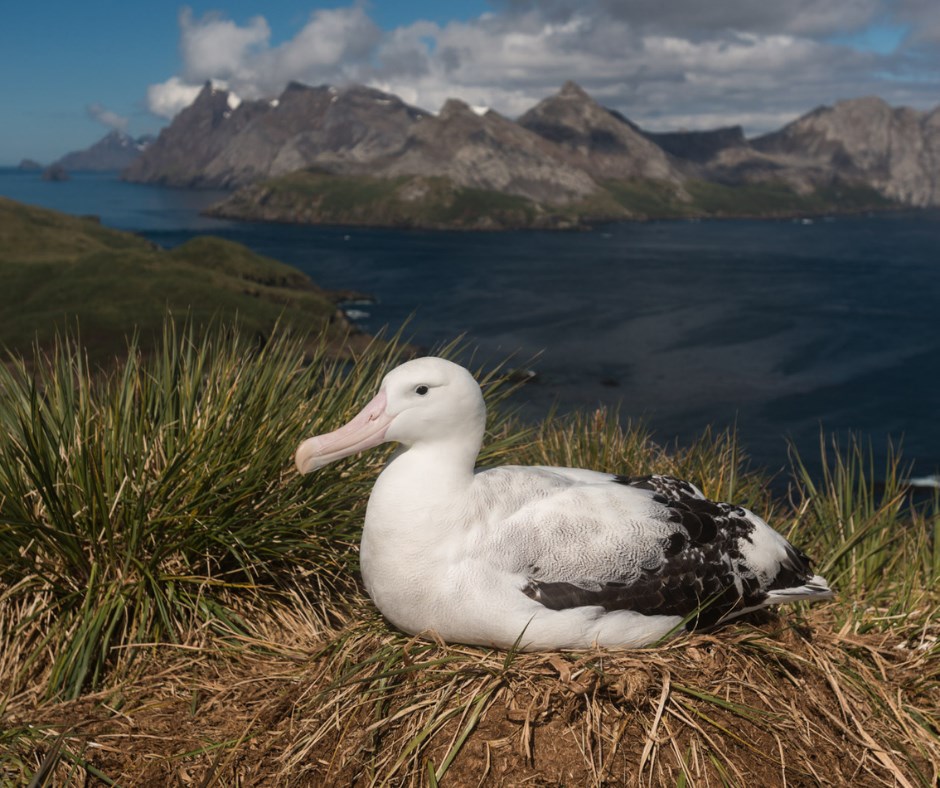
Still at risk from longlines: a breeding Wandering Albatross Diomedea exulans on Bird Island in the South Atlantic
Martin Collins (British Antarctic Survey, Cambridge, UK) and colleagues have published in the journal Marine Policy on the history of mitigating the impact on seabirds of a longline fishery for Patagonian Toothfish Dissostichus eleginoides in the South Atlantic.
The paper’s abstract follows:
“Seabird mortality in fisheries is a global problem and a major driver of the continued decline of many seabird populations. Unless appropriate mitigation is in place, longline fishing can cause high levels of seabird mortality. Here we describe the development and implementation of seabird mitigation measures in the Patagonian toothfish Dissostichus eleginoides fishery around the sub-Antarctic islands of South Georgia (CCAMLR Subarea 48.3), since the fishery began in the late 1980s. The initial high bycatch mortality (>5000 birds / 0.59 birds per 1000 hooks in 1996) has been reduced to negligible levels (<0.01 per 1000 hooks) through implementation of a suite of mitigation measures and a high level of compliance. The principal species killed in the fishery were black-browed albatross and white-chinned petrels, with most of the mortality occurring in April and early May. Whilst the synchronous introduction of much of the mitigation makes it is difficult to confirm which measures have been most effective, there is compelling evidence that the restriction of the fishery to the austral winter was a major factor. Night-setting and line-weighting measures have also been important in reducing mortality and the 100% observer coverage in the fishery has encouraged high levels of compliance. We also consider how different measures may be effective for different species and how novel measures, such as the use of marked hooks, have helped encourage compliance. The mitigation measures developed in the South Georgia fishery have subsequently been adopted in other CCAMLR fisheries and have helped guide global best practice in addressing seabird bycatch.”
With thanks to Richard Phillips, British Antarctic Survey.
Reference:
Collins, M.A., Hollyman, P.R., Clark J., Soeffker, M., Yates, O. & Phillips, R.A. 2021. Mitigating the impact of longline fisheries on seabirds: lessons learned from the South Georgia Patagonian toothfish fishery (CCAMLR Subarea 48.3). Marine Policy 131. doi.org/10.1016/j.marpol.2021.104618.
John Cooper, ACAP Information Officer, 21 June 2021

 English
English  Français
Français  Español
Español